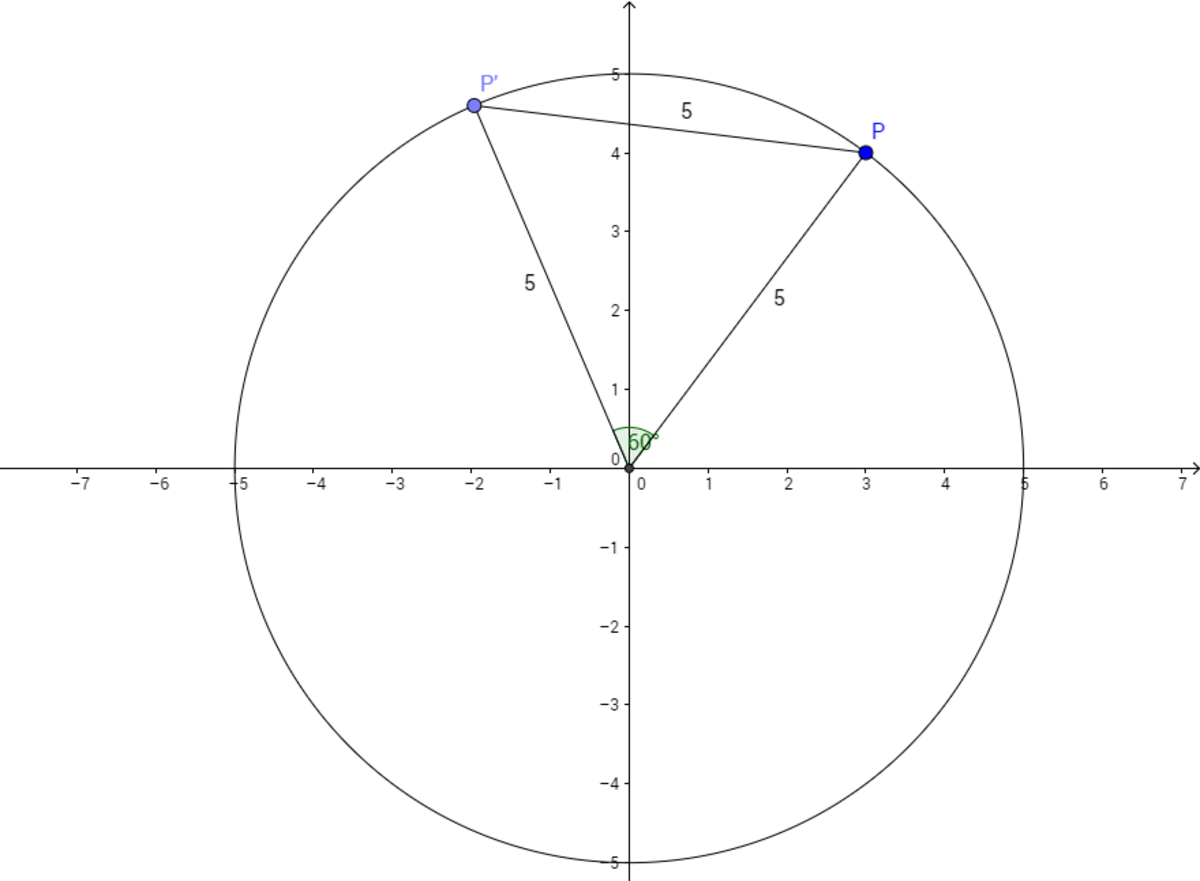Rotation, rotation, rotation!
On a Cartesian plane, point P ( 3 , 4 ) is rotated 6 0 ∘ (or 3 π radians) counterclockwise about the origin ( 0 , 0 ) . What are the new coordinates of P ?
As an explicit example, if the new coordinates are ( 1 , 2 ) , then one would submit 3.
Express your answer as x + y , rounded to 2 decimal places if necessary.
The answer is 2.64.
This section requires Javascript.
You are seeing this because something didn't load right. We suggest you, (a) try
refreshing the page, (b) enabling javascript if it is disabled on your browser and,
finally, (c)
loading the
non-javascript version of this page
. We're sorry about the hassle.
2 solutions
 All lengths are in units, and all angles are in degrees.
All lengths are in units, and all angles are in degrees.
In the diagram, P ′ refers to point P following the rotation. It can be observed that a triangle is formed between P , P ′ , and ( 0 , 0 ) . Because the equation of the circle on which P 's rotation path lies is x 2 + y 2 = 2 5 , the radius must be 5 units, meaning that the two sides of the triangle meeting at ( 0 , 0 ) are length 5 units. Because the angle between them is 6 0 ° , it follows that the triangle is equilateral. Therefore, P P ′ = 5 . If the coordinates of P ′ are ( x , y ) , then we can set up an equation ( x − 3 ) 2 + ( y − 4 ) 2 = 2 5 . We now have two equations:
x 2 + y 2 = 2 5
( x − 3 ) 2 + ( y − 4 ) 2 = 2 5
Solving for x and y reveals that x = 2 3 − 2 3 ≈ − 1 . 9 6 and y = 2 + 2 3 3 ≈ 4 . 6 . Adding the two gives us 2 . 6 4 .
Here's a solution in terms of complex numbers